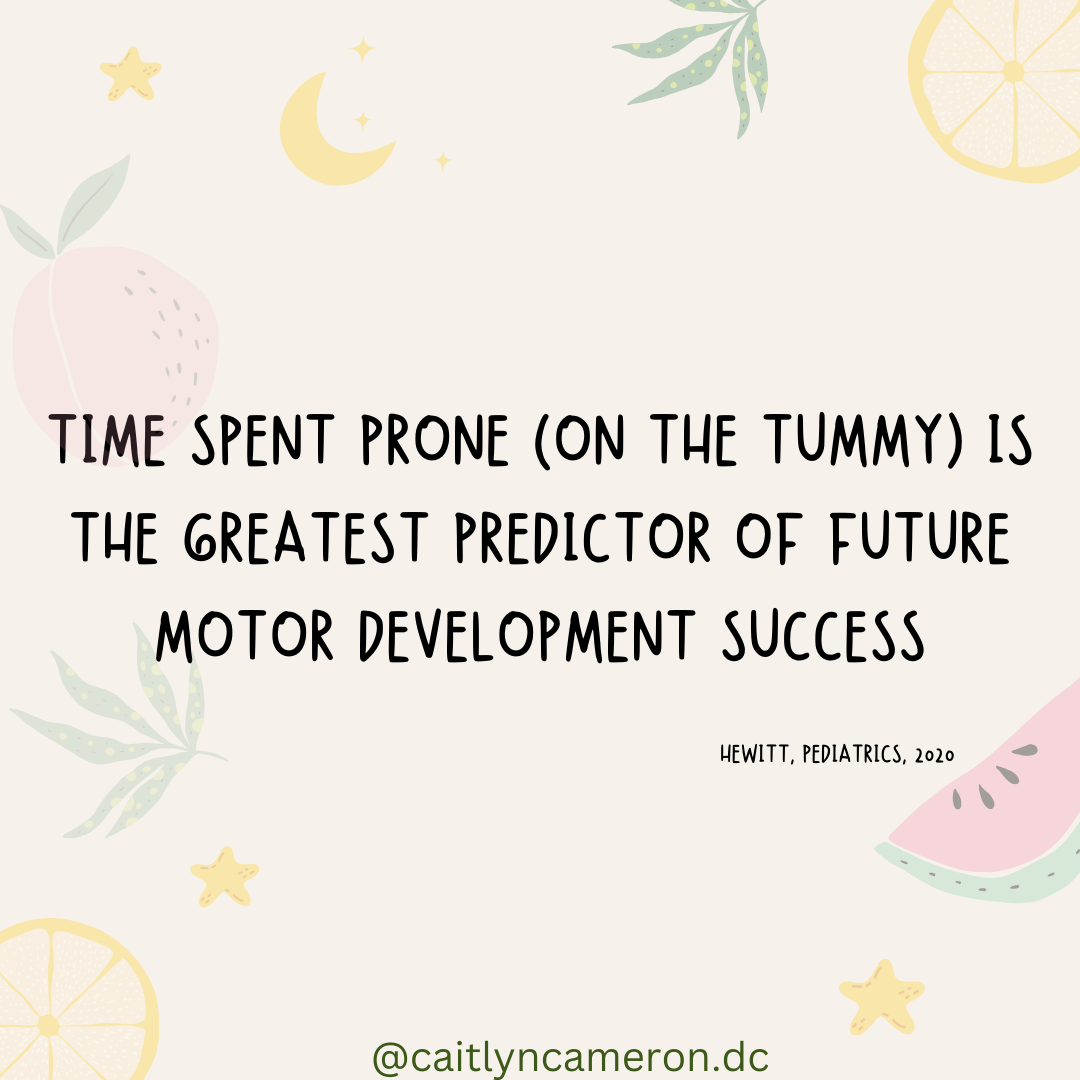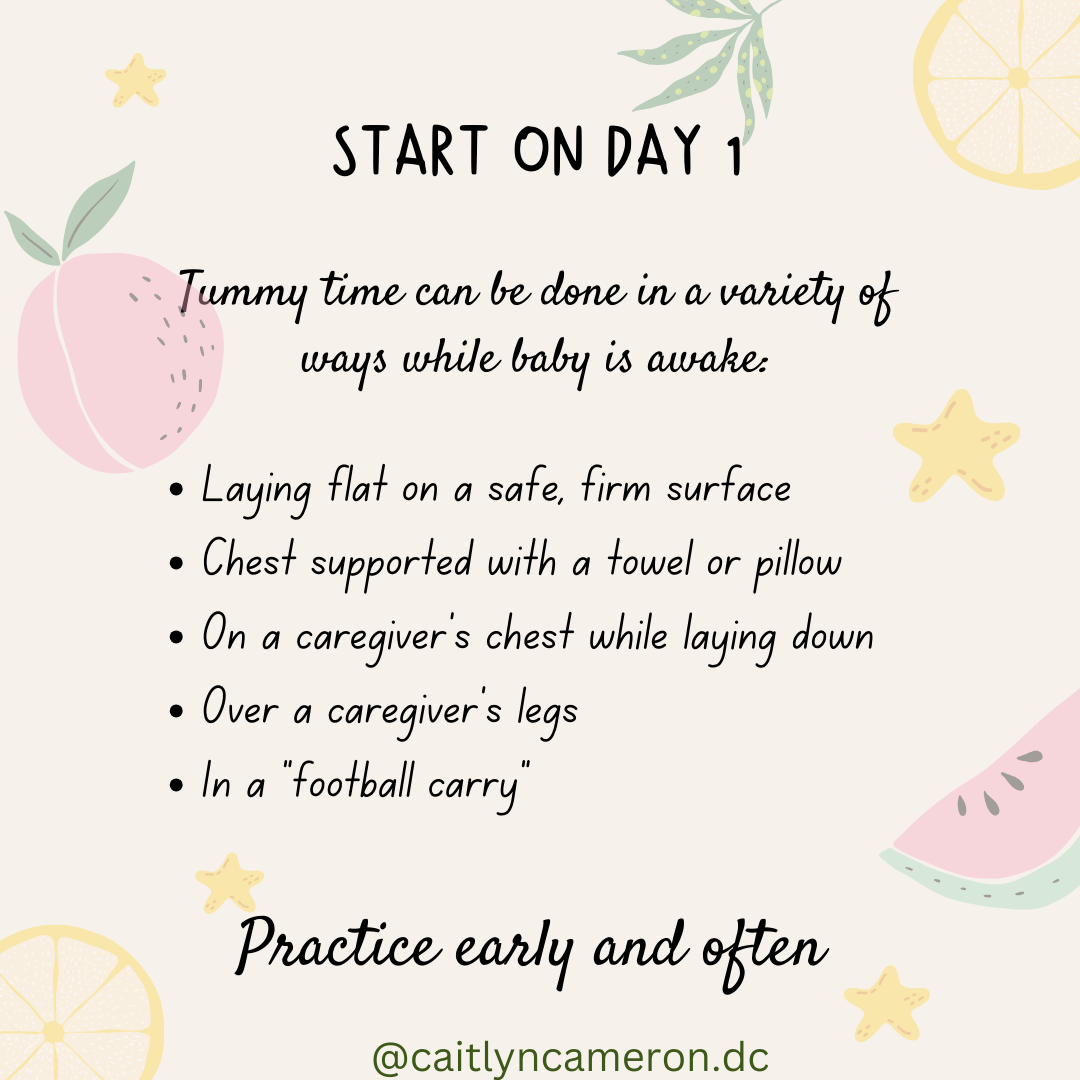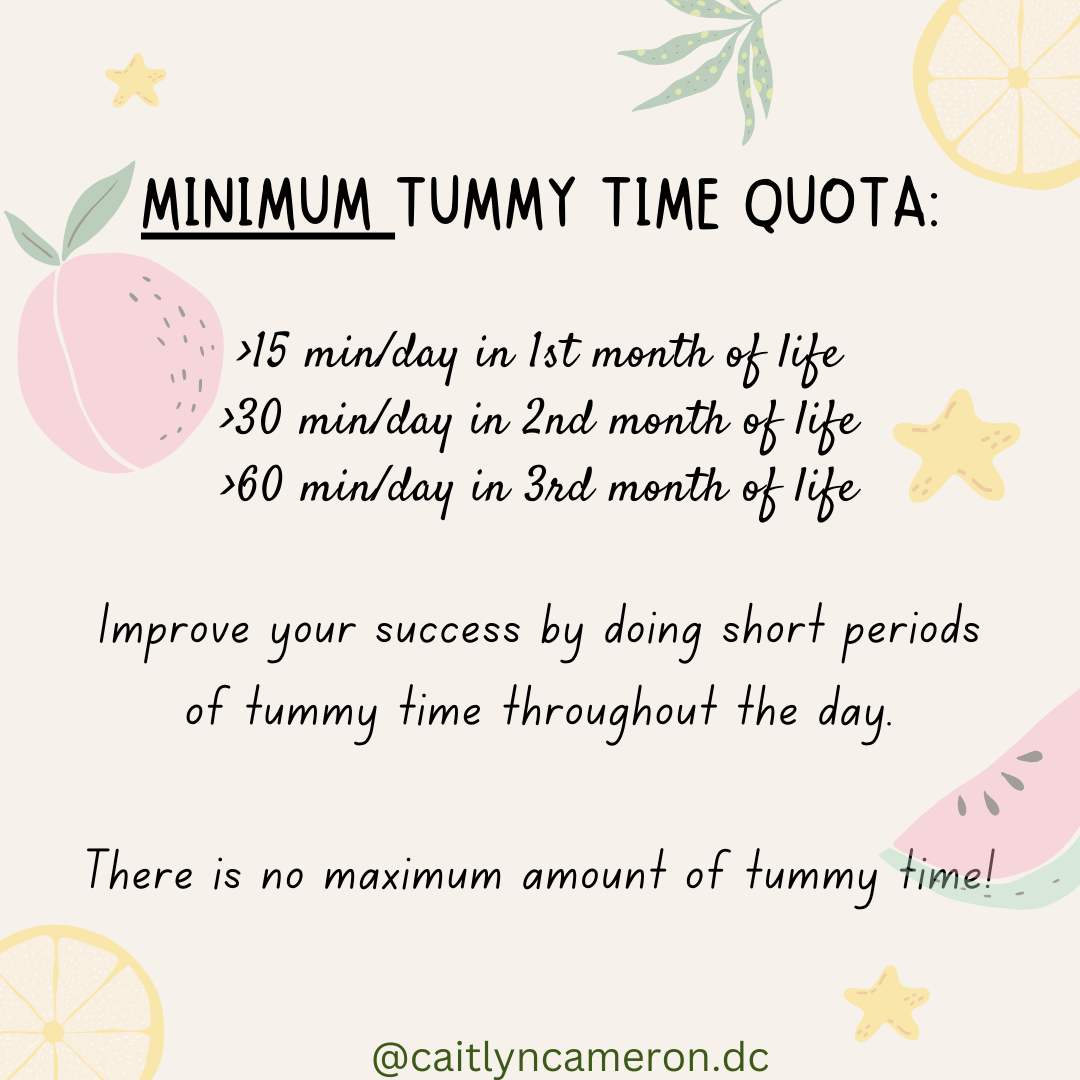Tummy Time and Healthy Infant Development

Tummy time is an essential activity for infants, contributing significantly to their physical development and overall health. It is recommended to start tummy time from day 1.
An achievable way to encourage tummy time for your newborn is by holding them against your chest while you are in a reclined position. This method not only promotes bonding but also helps the baby develop neck and shoulder muscles. A great time to try a round of tummy time is right after a diaper change when your baby is likely to be awake and alert.
Ideally, babies should have supervised tummy time for about 3-5 minutes, 2-3 times a day at first, gradually increasing the duration as they grow stronger and more comfortable. This practice helps strengthen their neck, shoulder, and arm muscles, promoting motor skills that are crucial for milestones like rolling over, sitting up, and crawling.
To make tummy time enjoyable, caregivers can engage with the baby by singing, talking, or using high contrast toys to capture their attention. Always ensure tummy time is conducted on a safe, flat surface, and never leave the baby unattended.
Why should babies do tummy time?

Time spent prone (on the tummy) is the greatest predictor of future motor development success. Source: Hewitt, Pediatrics, 2020
When should babies start tummy time?

You can start tummy time on Day 1. Tummy time can be done in a variety of ways while baby is awake:
- Laying flat on a safe, firm surface
- Chest supported with a towel or pillow
- On a caregiver's chest while laying down
- Over a caregiver's legs
- In a "football carry"
- Practice early and often
How much tummy time does a baby need?

Minimum Tummy Time Quota:
- >15 min/day in 1st month of life
- >30 min/day in 2nd month of life
- >60 min/day in 3rd month of life
- Improve your success by doing short periods of tummy time throughout the day.
- There is no maximum amount of tummy time!
What should I do if my baby hates tummy time?

If your baby despises tummy time and consistently fusses when put on their belly, then consider seeing a pediatric chiropractor. Just like adults, babies can experience back and neck pain. This pain can impair their ability to comfortably move their bodies or lay in certain positions like tummy time.
How can pediatric chiropractic help babies?

Pediatric chiropractic treatment has been reported to improve baby's positioning, neck range of motion, time spent in prone position (tummy time), and infant pain. Source: Miller, JMPT, 2019
Questions about tummy time or infant development? This email address is being protected from spambots. You need JavaScript enabled to view it. and let's chat!
- By Dr. Caitlyn Cameron, DC
Dr. Caitlyn Cameron is a chiropractor at Energize Health in Calgary. Since starting her chiropractic practice in 2014, Dr. Cameron has been passionate about helping individuals feel their best. Through a variety of gentle techniques she helps her patients move better, function more fully, and build confidence in their body’s abilities. Dr. Cameron has a special interest and additional training in the treatment of pediatric, pregnant, and postpartum patients and enjoys treating individuals through all stages of life.
Treatments with Dr. Cameron are evidence based and designed to fully address the patient’s unique goals. Multiple treatment techniques and modalities are used during her treatments including diversified spinal and extremity adjusting, low force mobilization, drop table adjusting, instrument-assisted adjusting with Arthrostim or Activator instruments, myofascial release, kinesiology taping, shockwave and laser therapy, and Graston technique. Dr. Cameron is also certified in Webster technique, a gentle form of treatment often used to reduce lower back/pelvic pain and improve function during pregnancy.
Dr. Cameron is passionate about continuing education and has completed additional courses on topics including perinatal and pediatric care, McGill Method for lower back pain, Active Release Technique®, therapeutic exercise, biomechanics, movement analysis, and pain science.
When she is not in the clinic Dr. Cameron can be found backcountry camping, mountain biking, or hiking with her husband, young daughter and dog. While growing up in Calgary, Dr. Cameron enjoyed a career in competitive archery, representing Team Canada at events around the world, and also played saxophone in a local jazz band.
- References:
- Hewitt L, Kerr E, Stanley RM, Okely AD. Tummy Time and Infant Health Outcomes: A Systematic Review. Pediatrics. 2020 Jun;145(6):e20192168. doi: 10.1542/peds.2019-2168. Epub 2020 May 5. PMID: 32371428. https://pubmed.ncbi.nlm.nih.gov/32371428/
- Miller JE, Hanson HA, Hiew M, Lo Tiap Kwong DS, Mok Z, Tee YH. Maternal Report of Outcomes of Chiropractic Care for Infants. J Manipulative Physiol Ther. 2019 Mar-Apr;42(3):167-176. doi: 10.1016/j.jmpt.2018.10.005. Epub 2019 Apr 25. PMID: 31029467. https://pubmed.ncbi.nlm.nih.gov/31029467/
Archive
- ► 2024 (5)
- ► 2023 (4)
- ► 2022 (9)
- ► 2021 (5)
- ► 2020 (5)
- ► 2019 (5)
- ► 2017 (5)
- ► 2016 (5)
